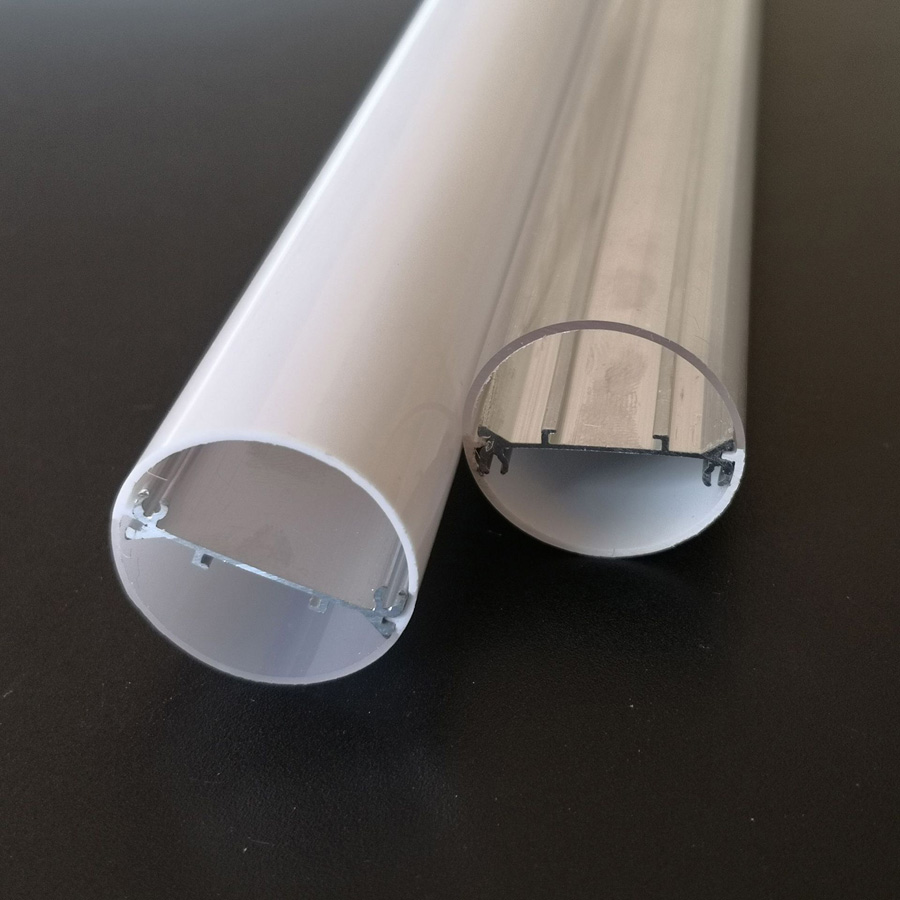LED Tube Housing Product Features
2025-07-03
LED tube lights have become a popular choice for commercial and residential lighting due to their energy efficiency, long lifespan, and high performance. At the core of these lights is the LED tube housing, which plays a crucial role in ensuring their durability, heat dissipation, and overall functionality. The housing of an LED tube is not just a protective cover; it contributes significantly to the light's performance and efficiency. Below are some key features of LED tube housing:
1. Durability and Protection
LED tube housings are typically made from high-quality materials such as aluminum, polycarbonate, or acrylic. These materials are chosen for their strength and ability to withstand external factors like humidity, dust, and mechanical impact. The housing provides a protective shell that prevents the LED components from being damaged, ensuring the longevity of the tube. The durability of the housing is particularly important in environments where lights are exposed to harsh conditions, such as factories, warehouses, or outdoor spaces.
2. Heat Dissipation
One of the key advantages of LED technology is its energy efficiency and low heat generation. However, when heat does accumulate, it can reduce the lifespan of the LED components and affect their performance. LED tube housings are designed with efficient heat dissipation features, often incorporating aluminum for its excellent thermal conductivity. Some housings include fins or vents that allow heat to escape, preventing the LEDs from overheating and ensuring that the light maintains optimal performance over time.
3. Corrosion and UV Resistance
Many LED tube housings are designed with corrosion-resistant coatings, particularly when used in environments with high moisture or exposure to chemicals. For example, in industrial or marine settings, the housing material must resist rust and corrosion caused by saltwater or chemical spills. Additionally, UV-resistant coatings or materials help prevent degradation from exposure to sunlight, ensuring that the housing retains its clarity and strength over time without becoming brittle or discolored.
4. Compatibility with Different Mounting Systems
LED tube housings are designed to be compatible with various mounting systems. Whether it's for surface mounting, suspension, or installation in pre-existing fluorescent tube fixtures, the housing is often equipped with adjustable clips, brackets, or slots to make installation seamless. This versatility allows LED tubes to be used as direct replacements for traditional fluorescent tubes, making them an easy upgrade for energy-efficient lighting solutions.

5. Enhanced Light Diffusion
The housing of an LED tube is crucial in how light is diffused across a space. Many LED tubes feature frosted or opal housings, which help to distribute light evenly and reduce glare. This characteristic is especially important in settings where high-quality, uniform illumination is needed, such as in offices, hospitals, or schools. The diffusion properties of the housing also contribute to improving the visual comfort of occupants, reducing eye strain and providing better overall lighting experiences.
6. Light Output and Efficiency
The housing can also influence the overall efficiency of the LED tube. With the right design, the housing helps ensure that the light output is maximized by reducing energy loss. Reflective coatings or materials inside the housing can enhance the light distribution and direction, ensuring that the energy is efficiently converted into usable light, rather than being wasted as heat or lost within the fixture.
7. Aesthetic Design
While function is the primary focus of LED tube housings, aesthetic considerations are also important in certain applications. Some LED tube housings are designed to blend seamlessly into modern architectural designs. With sleek lines, minimalist features, and clean finishes, the housing can enhance the overall appearance of the lighting fixture, making it suitable for both commercial and residential spaces. These design features help maintain the contemporary, professional look of a room or workspace, while providing effective lighting.
8. Safety and Compliance
LED tube housings are designed to meet safety standards and regulatory requirements for electrical products. They are typically certified for electrical safety, such as UL or CE ratings, which ensure that the housing and the LED tube meet rigorous quality and safety standards. In some cases, the housing is also designed to provide additional safety features, such as fire-resistant materials or protection against electric shocks, making them ideal for use in sensitive environments.
Conclusion
The housing of an LED tube light is not merely a protective covering but a vital component that contributes to the light's overall functionality, durability, and energy efficiency. Features such as durability, heat dissipation, corrosion resistance, compatibility with different mounting systems, and light diffusion properties are essential for ensuring that LED tubes perform effectively and reliably over time. By choosing high-quality LED tube housings, users can maximize the lifespan and performance of their lighting systems while enjoying the benefits of energy-efficient and environmentally-friendly illumination.
As a professional manufacturer and supplier, we provide high-quality products. If you are interested in our products or have any questions, please feel free to contact us.


